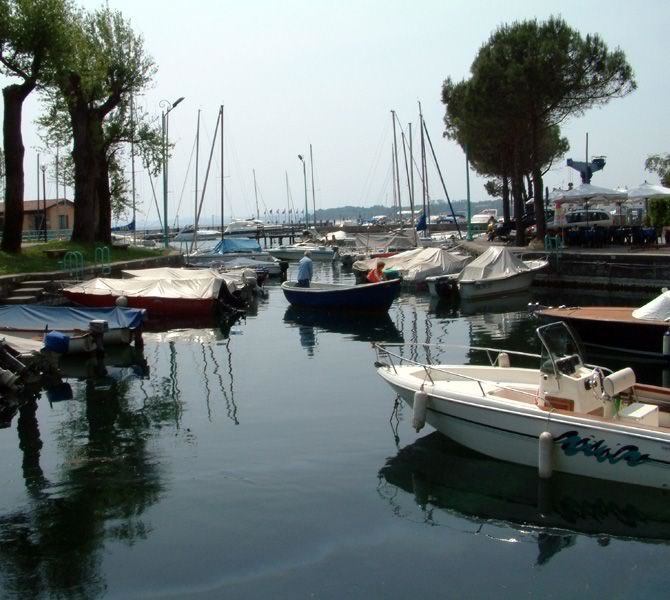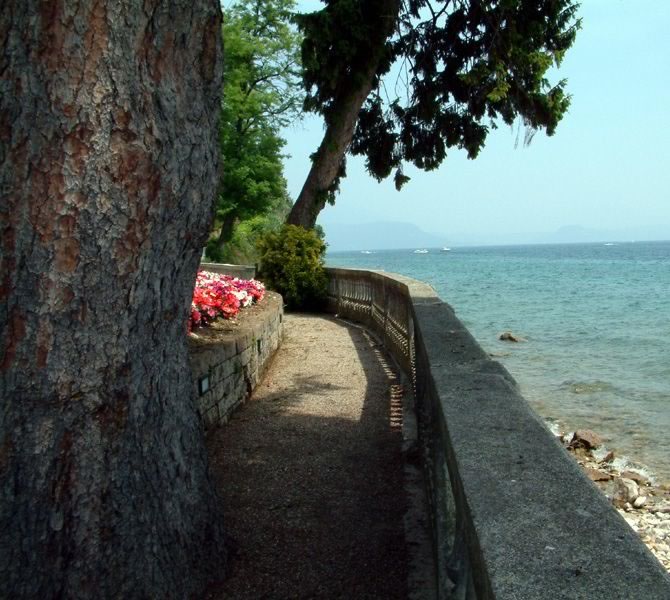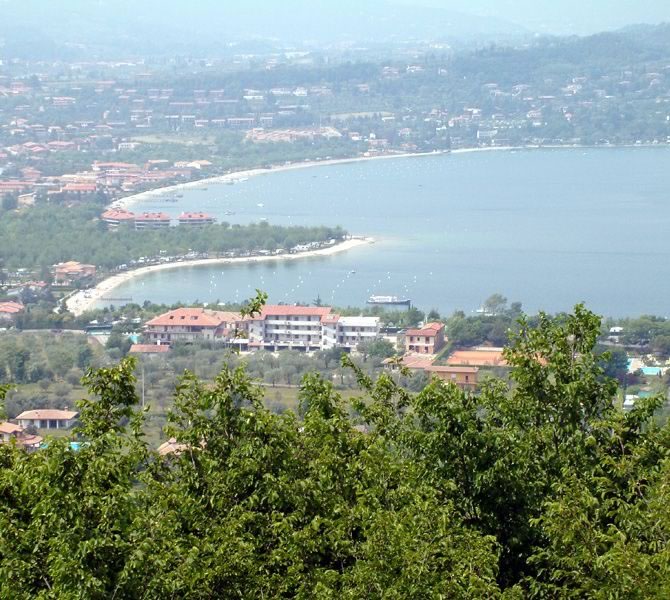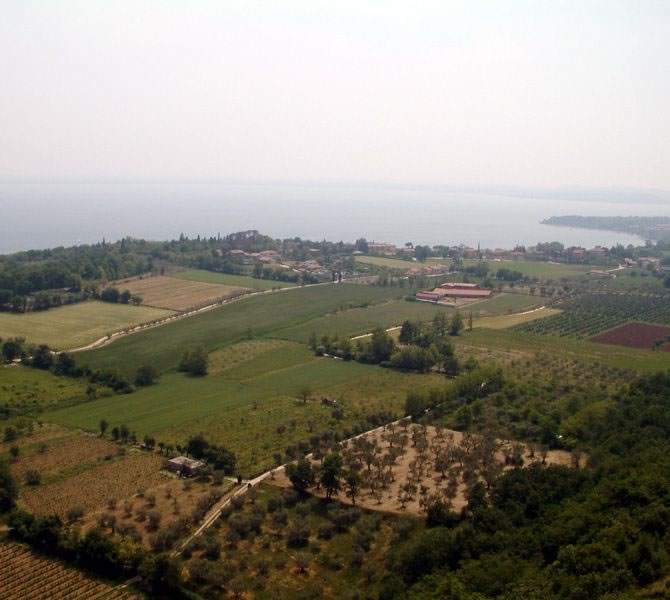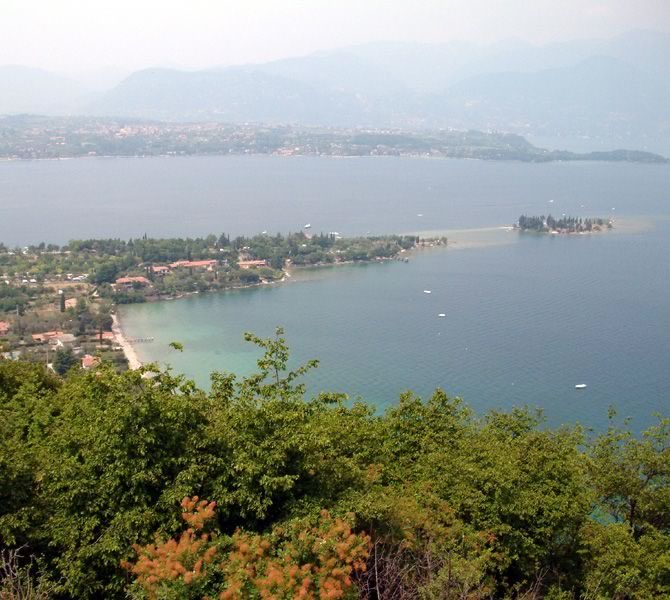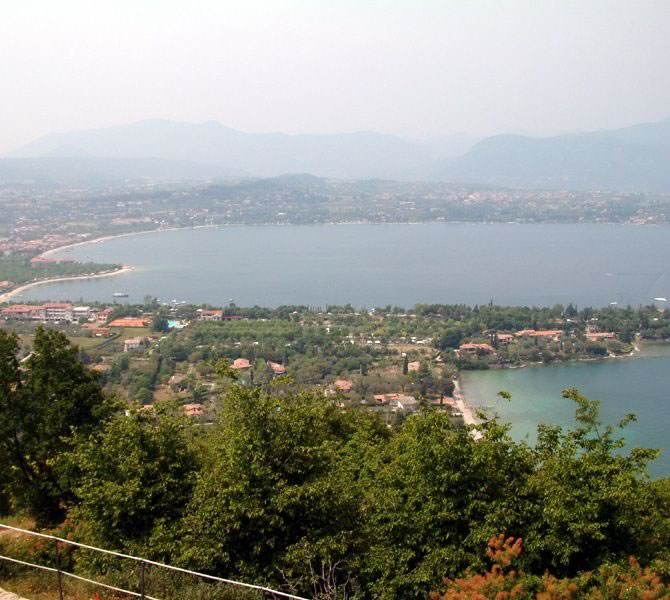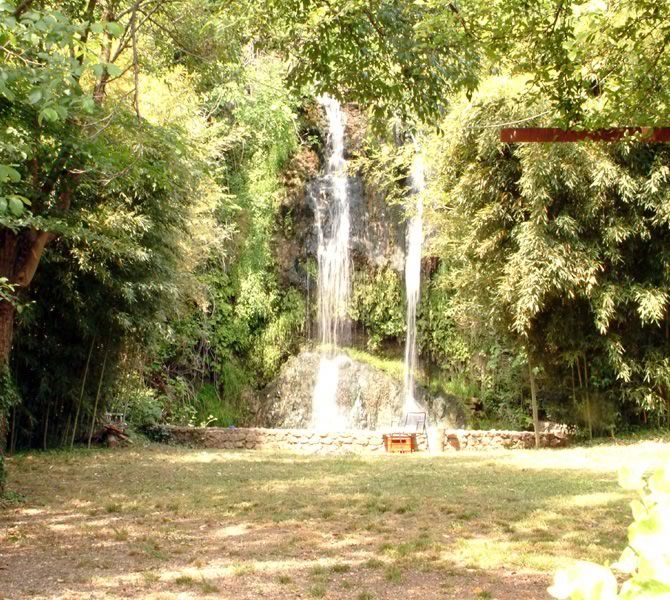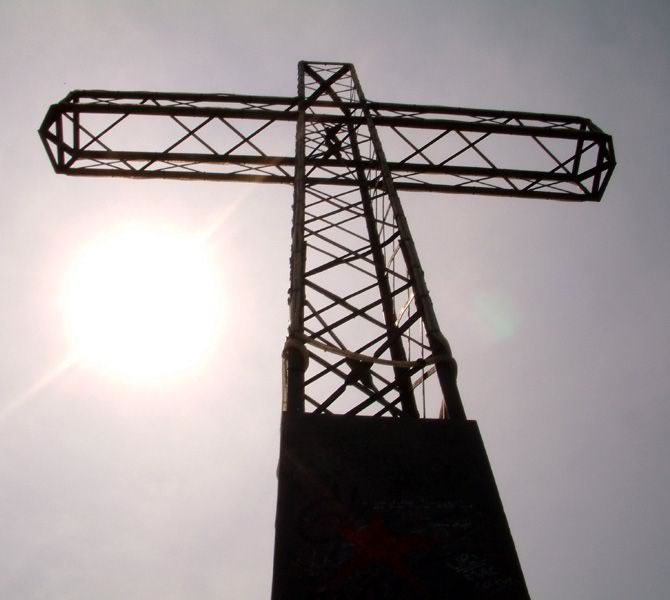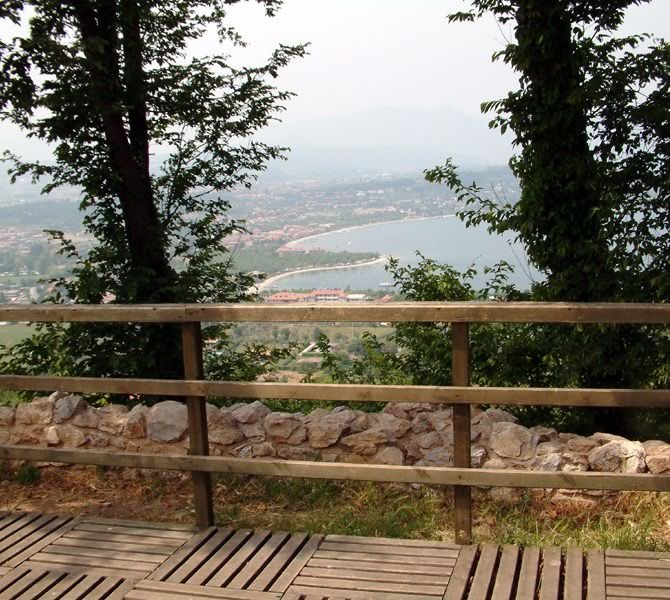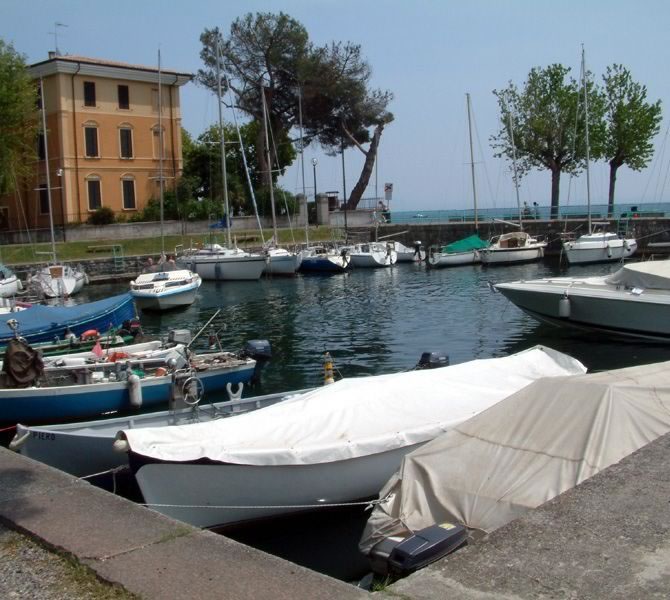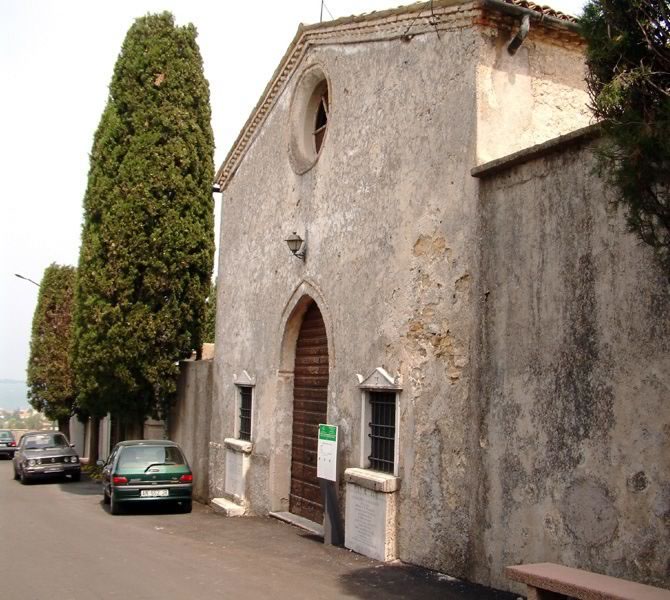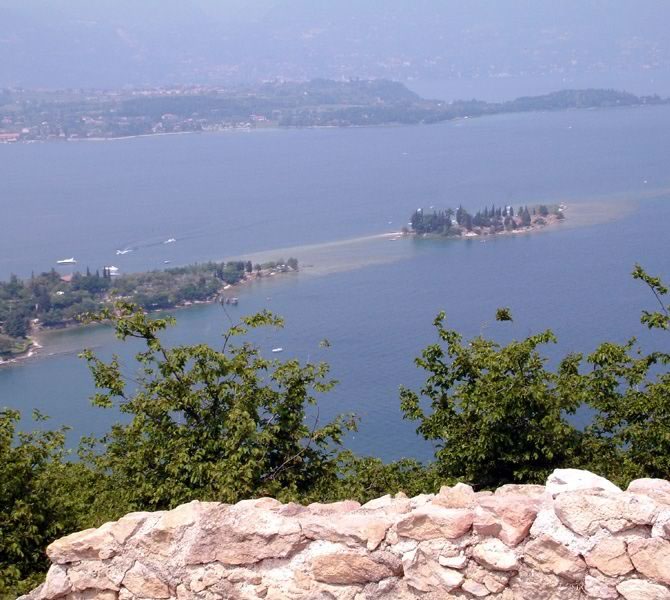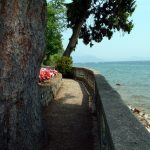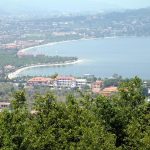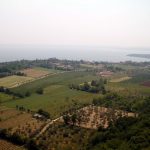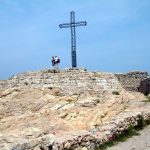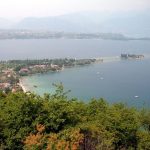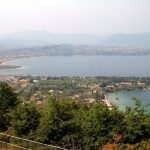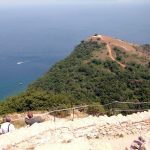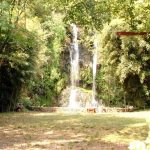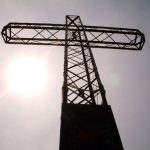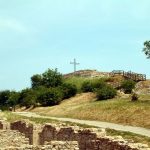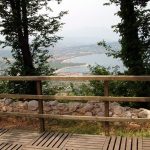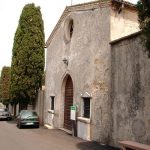Manerba del Garda
HISTORY OF MANERBA DEL GARDA
The name of the town Manerba del Garda derives from the Greek “Minerva”, legends tell, that the goddess once a time came here to show the inhabitants of “Valle Athinese” how to grow olives.
ARTS
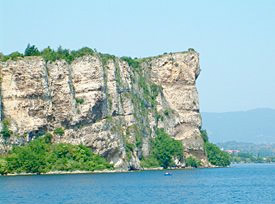 The ancient Parish of Manerba del Garda is situated in the “contrada” of Pieve Vecchia and was consecrated to Santa Maria Assunta. The original building was edified between the 5th. and the 6th. century, the first restoring was done between the 12th. and the 12th. century and in the 16th. century it was completely restored for another time. In a corner of the bell-tower there is to see a Romanesque tomb. The official seat of the Commune of Manerba today is at Salarolo. The parish church was built in the years 1746-1757 by the architect Antonio Spazzi; nearby the cemetery you can find another little church “SS. Trintia” from the beginning of the 14th. century. In the hamlet Balbina a visit merit the church Santa Lucia, standing in the midst of a cluster of houses. The temple dates back to the 15th. century, with interesting frescoes of the 14th. century, “Our Lady with child”, “L’Annunciazione” and scenes of “Passione”, to find in the apse. Behind Montinelle, climbing up to the summit (altitude 1.509m), a wonderful walk with unforgettable panoramas. “Rocca di Manerba” the steep rock of the Glacial Times always an interesting place for archaeological excavations. Indeed, they found ruins of a Medieval fortress. That castle, during the High Middle Ages was the defence point of the Longobards (776), guided by the nephew of the famous Desiderio Cacone. The war continued more than 2 years against the troops of Marcario, Duca di Friuli. At least, in 1.121 it became residence of Federico II together with a great part of Valtenesi, and during the following years it took scenery of numerous battles. Then it fell in the hands of the Scaligeri, followed by the Visconti Family and at least it belonged to the Republic of Venice, which decided to pull it down, for hindering bandits to capture that castle.
The ancient Parish of Manerba del Garda is situated in the “contrada” of Pieve Vecchia and was consecrated to Santa Maria Assunta. The original building was edified between the 5th. and the 6th. century, the first restoring was done between the 12th. and the 12th. century and in the 16th. century it was completely restored for another time. In a corner of the bell-tower there is to see a Romanesque tomb. The official seat of the Commune of Manerba today is at Salarolo. The parish church was built in the years 1746-1757 by the architect Antonio Spazzi; nearby the cemetery you can find another little church “SS. Trintia” from the beginning of the 14th. century. In the hamlet Balbina a visit merit the church Santa Lucia, standing in the midst of a cluster of houses. The temple dates back to the 15th. century, with interesting frescoes of the 14th. century, “Our Lady with child”, “L’Annunciazione” and scenes of “Passione”, to find in the apse. Behind Montinelle, climbing up to the summit (altitude 1.509m), a wonderful walk with unforgettable panoramas. “Rocca di Manerba” the steep rock of the Glacial Times always an interesting place for archaeological excavations. Indeed, they found ruins of a Medieval fortress. That castle, during the High Middle Ages was the defence point of the Longobards (776), guided by the nephew of the famous Desiderio Cacone. The war continued more than 2 years against the troops of Marcario, Duca di Friuli. At least, in 1.121 it became residence of Federico II together with a great part of Valtenesi, and during the following years it took scenery of numerous battles. Then it fell in the hands of the Scaligeri, followed by the Visconti Family and at least it belonged to the Republic of Venice, which decided to pull it down, for hindering bandits to capture that castle.
Today you can see its Prehistoric ruins in the museum “Museo della Valtenensi” at Montinelle. Too, you can admire the excavations of the “Ripari Valtenesi”, the foot of the rock, where they found tracks of 5.ooo years B. C., a real “Necropoli“, and too they found collected oak tombs, an unique finding of Italy. Another group of Romanesque tombs (more than 100 tombs) are found at the southern side of the rock.
ATTRACTIONS
Before leaving Manerba, you have to go for a walk along the lake, beginning at Punta Belvedere to “Isola San Biagio“, a little isle united with the mainland by a small dam. Quite nearby lies the port of Dusano, with its wonderful clear water, an attractions for divers and fishermen.
